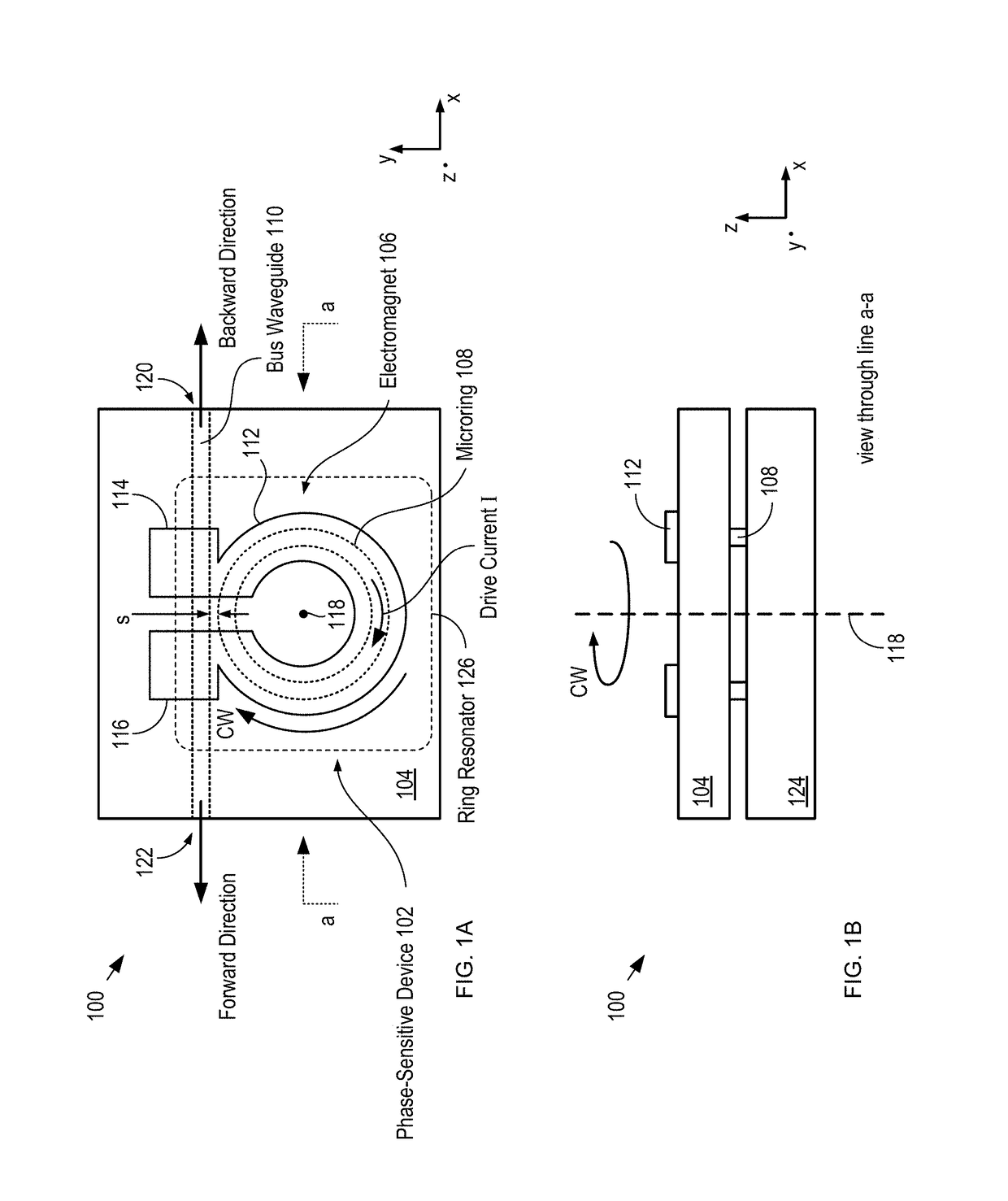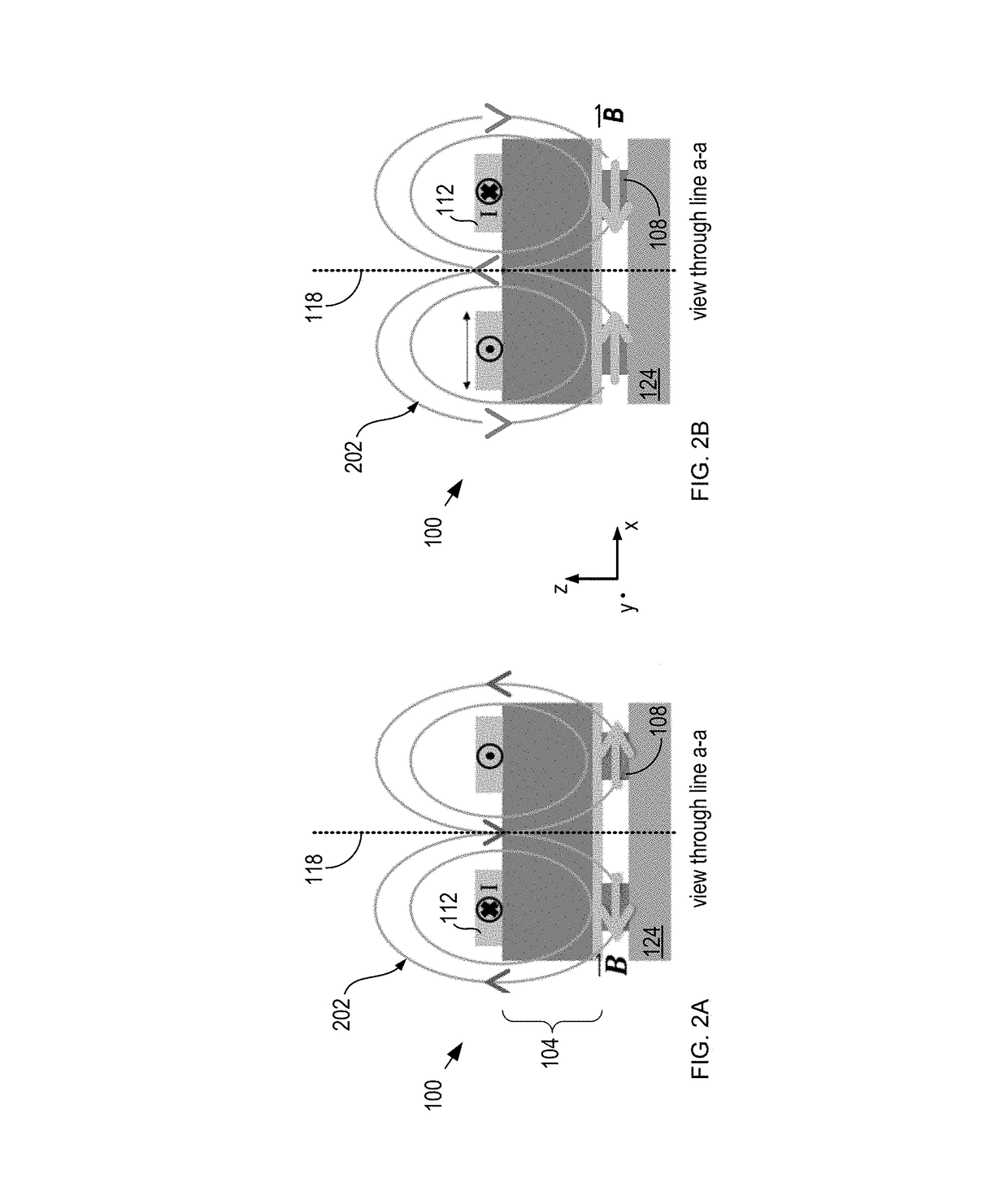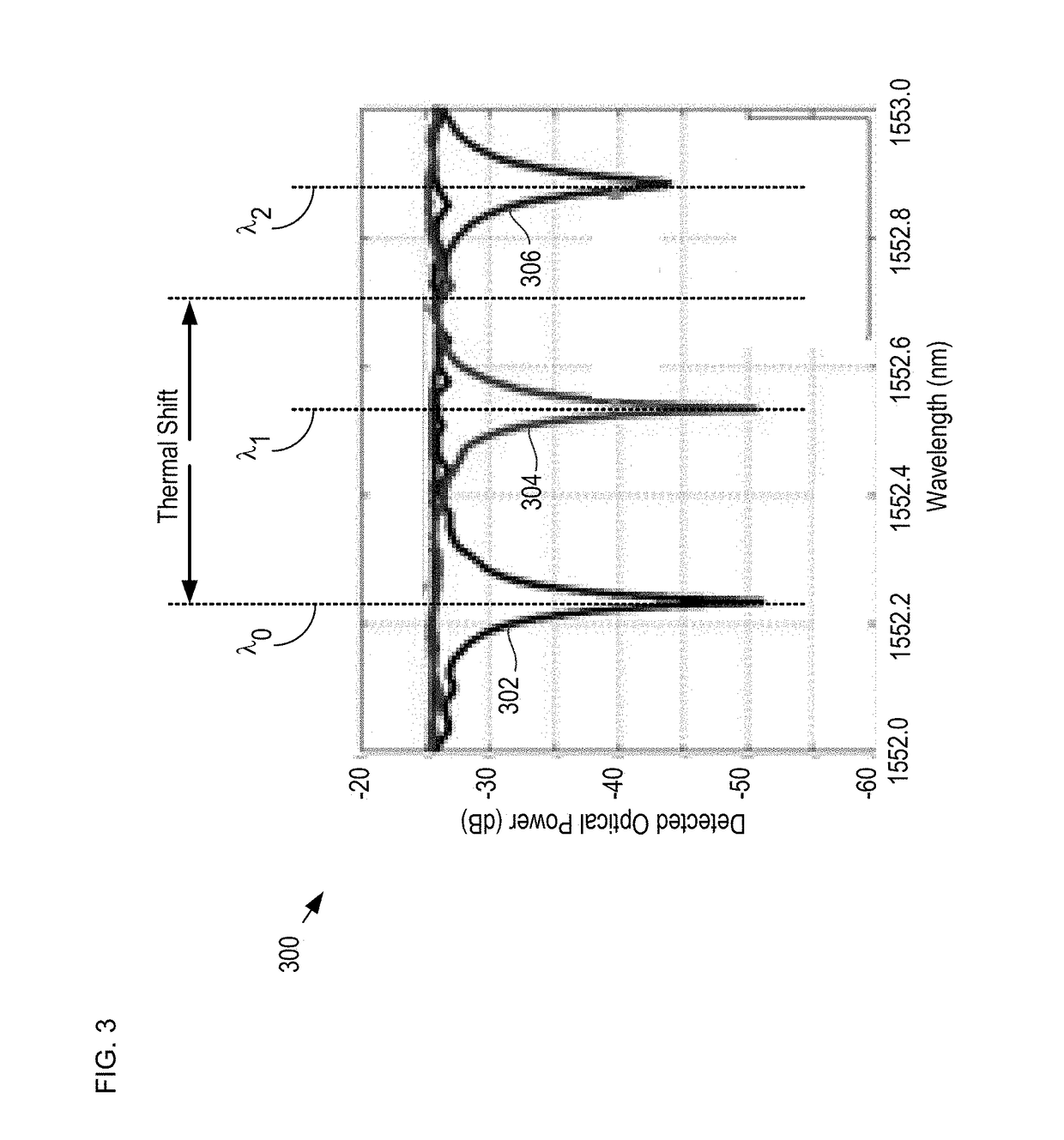Reconfigurable Integrated-Optics-Based Non-Reciprocal Devices
- Summary
- Abstract
- Description
- Claims
- Application Information
AI Technical Summary
Benefits of technology
Problems solved by technology
Method used
Image
Examples
Embodiment Construction
[0040]The present invention exploits the fact that a non-reciprocal phase shift can be induced in an integrated-optics-based phase-sensitive device, such as a ring resonator or Mach-Zehnder interferometer, by coupling the device with a magneto-optic layer and applying a magnetic field to the resultant structure. As disclosed in U.S. Pat. No. 8,396,337, which is incorporated herein by reference, the magnetic field can be generated via an electromagnet formed on top of the magneto-optic layer, which overcomes many of the problems associated with permanent-magnet-based non-reciprocal devices. In addition, since the magnitude of the drive current in an electromagnet can be controlled, the strength of the magnetic field can be tailored to achieve the desired amount of nonreciprocal phase shift (NRPS). In a resonant, ring-resonator based device, this effect produces a desired magnitude of the resonance wavelength split (RWS) induced in the device and, therefore, the CW and CCW resonance w...
PUM
 Login to View More
Login to View More Abstract
Description
Claims
Application Information
 Login to View More
Login to View More - R&D
- Intellectual Property
- Life Sciences
- Materials
- Tech Scout
- Unparalleled Data Quality
- Higher Quality Content
- 60% Fewer Hallucinations
Browse by: Latest US Patents, China's latest patents, Technical Efficacy Thesaurus, Application Domain, Technology Topic, Popular Technical Reports.
© 2025 PatSnap. All rights reserved.Legal|Privacy policy|Modern Slavery Act Transparency Statement|Sitemap|About US| Contact US: help@patsnap.com



